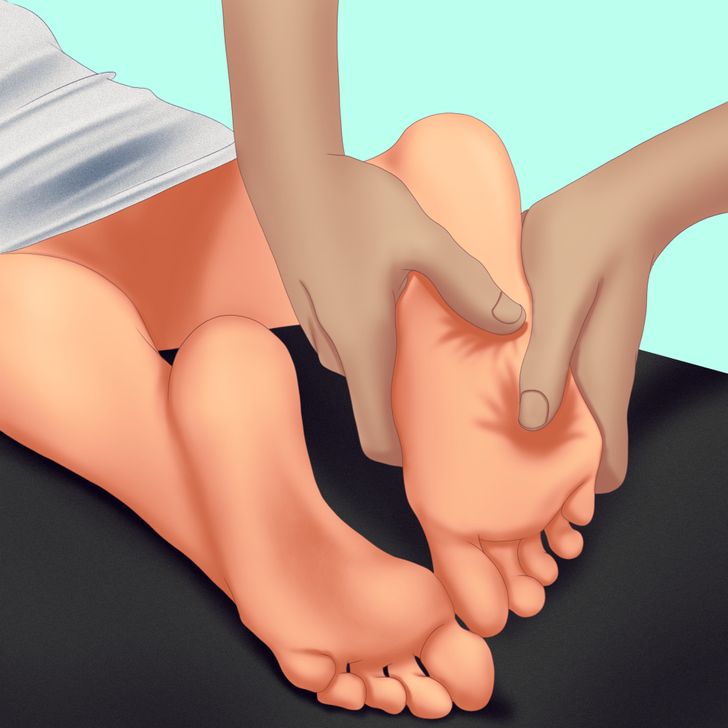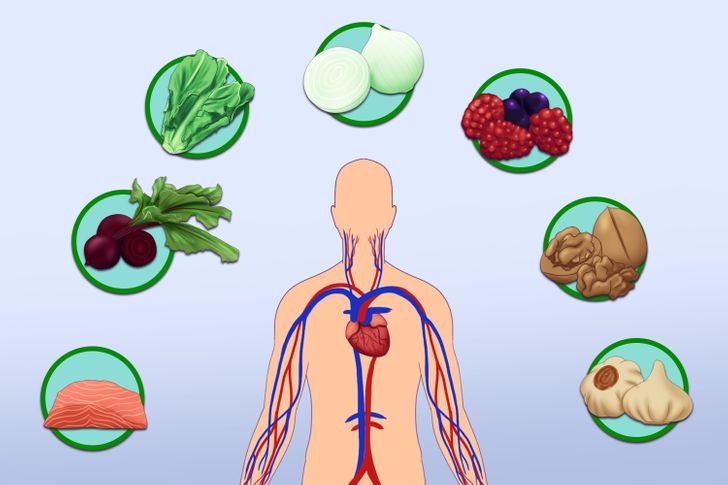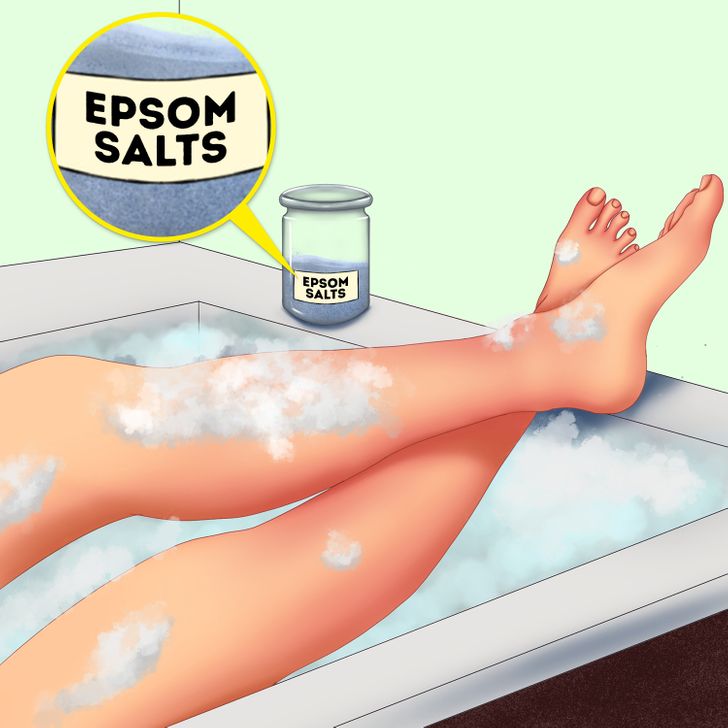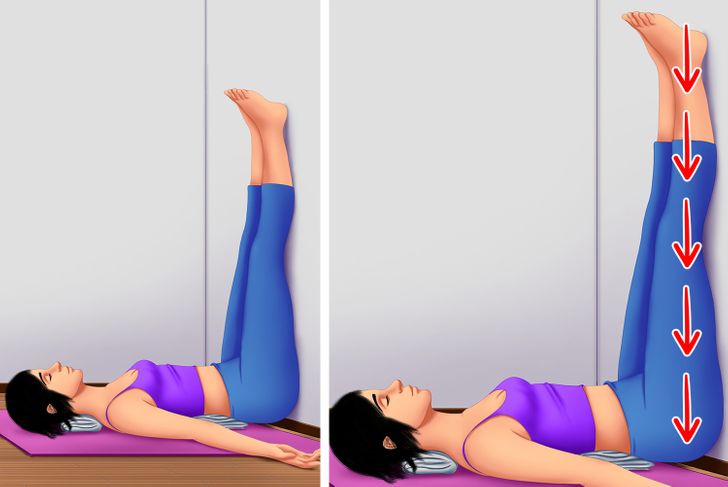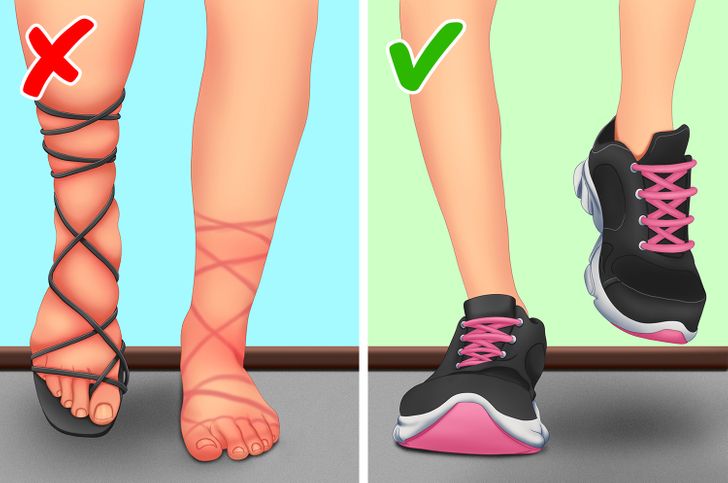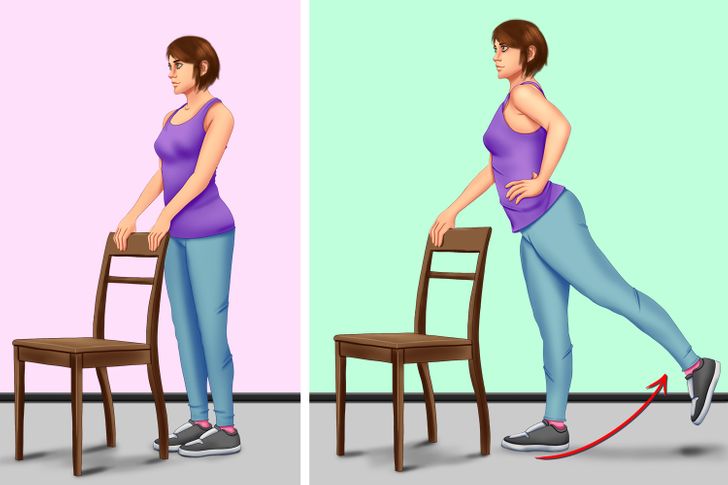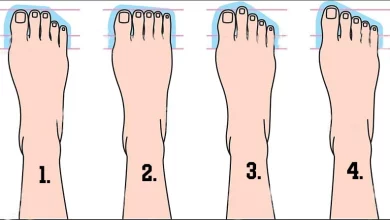Find some time during your busy day to pamper yourself with a massage. You can either do it yourself or seek a massage specialist. Apart from the feeling of relaxation, it will
stimulate your blood flow and lymph fluid to circulate more easily through your body.
Follow these steps for a more effective massage:
1. Work in upward movements.
2. Place your fingers on your ankle.
3. Apply pressure with your fingers as you gently move your hands towards your hips.
4. Move your hands back to your ankles and repeat the same movement about 10 times per leg.
7. Add superfoods to your diet
Superfoods
offer a high level of nutrients. Though they don’t protect you from chronic illnesses, they’re highly beneficial due to the richness in compounds, such as antioxidants, fiber, and fatty acids that they contain. Fatty fish like
salmon and mackerel are excellent sources of omega-3 fatty acids. These fats help our circulation because they promote the release of
nitric oxide. This molecule dilates blood vessels, raises blood supply, and consequently lowers blood pressure.For those of you who are vegetarians, you can
get this component through beets. They are high in
nitrates, which your body converts into nitric oxide.
Other
superfoods that you could include in your diet to boost your circulation are:
1. Leafy greens
2. Onions
3. Garlic
4. Walnuts
5. Berries
8. Take a restorative bath with epsom salt
At the end of the day, there’s nothing better than to take a long relaxing bath. But if you want to take it to the next level: add some epsom salts. They contain a chemical compound called
magnesium sulfate.
Experts
claim that its deficiency can contribute to increased inflammation and chronic conditions.
When we soak in the tub, the magnesium can be absorbed through the skin and thus we elevate our levels of magnesium. When you’re drawing your bath,
measure 2 cups of epsom salt per gallon of water. Soak in and enjoy!
9. Elevate your feet
We may not realize this, but we spend most of the day sitting down with our legs crossed. Then, we wonder why our legs hurt or why our feet are swollen. However, there’s a simple way to
help boost our circulation.First of all, elevating your feet helps with the natural blood flow since your veins don’t need to work against gravity. As a result, inflammation will go down because there’s no longer a buildup of swelling in the legs and feet. In addition, it will contribute to draining the tension from your legs and feet and relieve some of your pain.
Follow these steps when elevating your feet:
1. Remove your footwear.
2. Lie down on a couch, bed, or the floor: make sure there’s enough room to stretch your legs. If you’re lying on the floor, you can raise your legs against a wall at a 90° angle. For the bed or couch, get some pillows to keep your feet elevated above the level of your heart.
3. Have your feet elevated for about 20 minutes and repeat whenever you have a short break throughout the day — you can catch up on some work emails or some reading while doing so. If you’re comfortable enough, you can even take a nap.
10. Invest in good footwear
One of the reasons behind the swelling in your feet and, consequently legs, can be a poor choice of footwear. Stylish as they may be, high heels or pointed-toe shoes aren’t doing your body any favors. Additionally, you should be careful about the size. Poor-fitting shoes can bring about an array of problems. But don’t worry, this doesn’t mean you should get rid of those trendy new stilettos.
Make sure you don’t wear them for too long and try to look for other alternatives such as wedge heels, which provide better support and balance, or sneakers.
BONUS: Easy exercises to do at home
Before you get up:
1.
Ankle pumping: While you’re lying on your back with your legs stretched, flex your feet moving your toes up and down. Repeat at least 10 times.
2.
Knee bends: After you finish this exercise, with your legs still stretched, move alternatively your knees up to your chest and then back down. Repeat ten times with each leg.
3.
Leg lifts: While you’re still lying on your back, bend one knee with the sole of your foot firmly on a flat surface. Raise your other leg without bending it until both knees are at the same level. Do this 10 times and then repeat with the other leg.
During the day:
If you’ve been sitting for too long at your desk, bear in mind your posture. Avoid crossing your legs for too long and when you take a break, try to do the following exercises:
1.
Heel lifts: While holding onto a chair, raise your heels slowly until you’re standing on tiptoes. Lower your heels until they touch the ground. Repeat 10 times.
2.
Leg stands: While holding onto a chair, leave one foot firmly grounded on the floor and lift the other one. Hold this position for 15 seconds and then repeat with the other leg. Try to gradually increase the time you hold this position.

